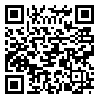BibTeX | RIS | EndNote | Medlars | ProCite | Reference Manager | RefWorks
Send citation to:
URL: http://jps.ajaums.ac.ir/article-1-80-en.html
Introduction: Leishmaniasis is one of the common parasitic disease which is one of the public health problems in tropical and subtropical regions. Moreover, Iran is faced to this issue. It affects about 20 to 40 cases in every 100000 persons annually and the number of cases is increasing around the world. This deseas is caused by protozoan parasites of the genus Leishmania divided into major and tropica species in Iran. Based on official reports, more than 70% of cases are affected by leishmania major in our country.
Methods and Materials: This review article has been performed by searching cutaneous leishmaniasis, leishmaniasis major and leishmania tropica keywords in various databases such as the SID, google scholar, PubMed and related books.
Results: Serologic tests are rarely used to diognose cutaneous leishmaniasis because of wide spectrum of agents and low sensitivity and specificity. The best way of laboratory diagnosis is microscopic examination of infected individual’s skin biopsy. Five valent antimony compounds are used as a treatment for this disease. It is not necessary to cure all the patients because most of the injuries and damages recover on their own. Due to the side effects of antimony compounds, it is better to used fewer of these compounds.
Discussion and Conclusion: Special attention should be paid to leishmaniasis due to the various routes of leishmania transmission. The rate of infection in endemic regions is very high; although, mortality and morbidity related to leishmaniasis is very low. Additionally, in several cases, the lesions of leshmaniasis is not curable even for one year. The most effective treatment for this disease is local injection of Glucantime which has its special disorders; therefore, it is limited to patients with death risk. There are lots of efforts to prevent leishmania transmission in Iran and there is a hope to eradicate it in near future.
Received: 2016/06/6 | Accepted: 2016/08/29 | Published: 2016/08/29
| Rights and permissions | |
 |
This work is licensed under a Creative Commons Attribution-NonCommercial 4.0 International License. |




